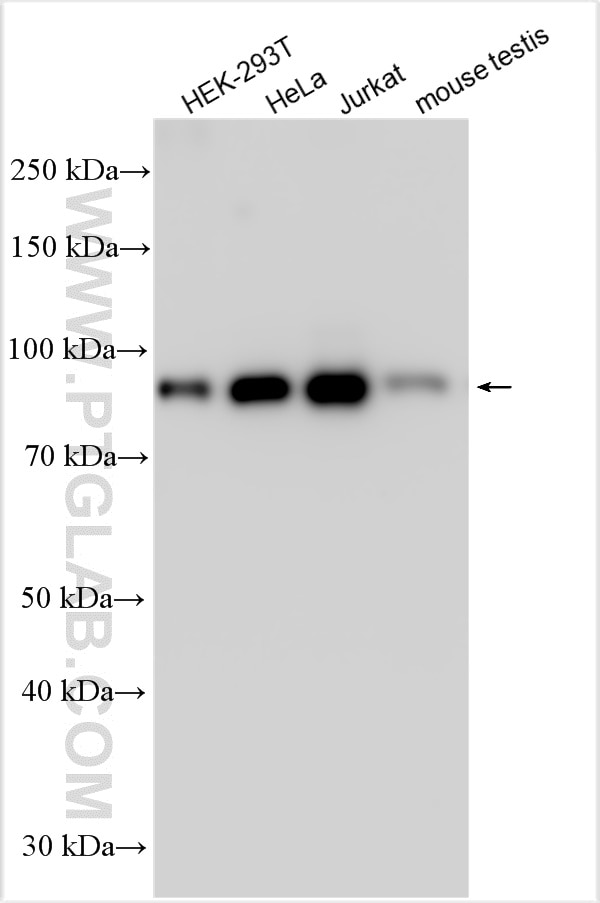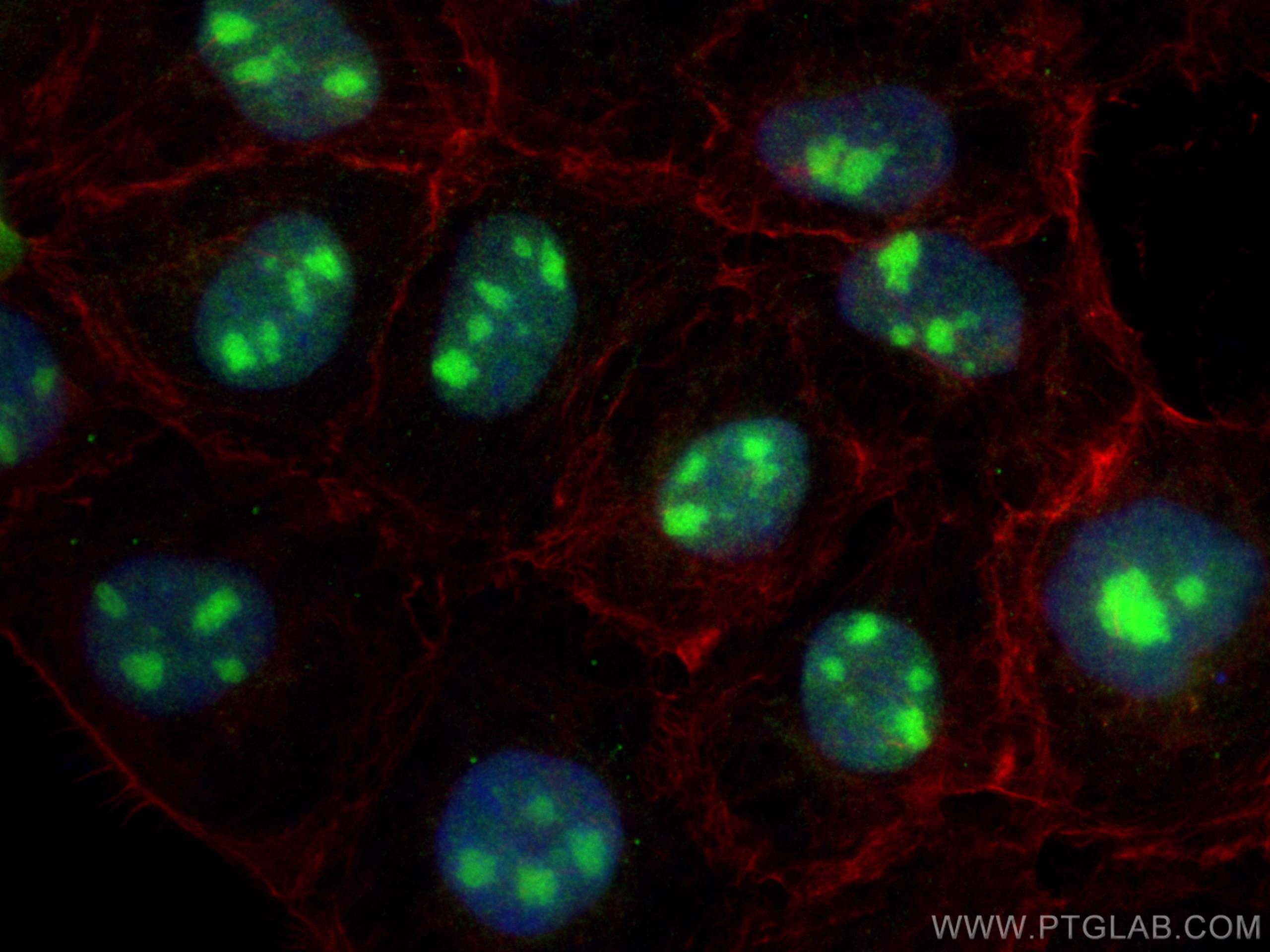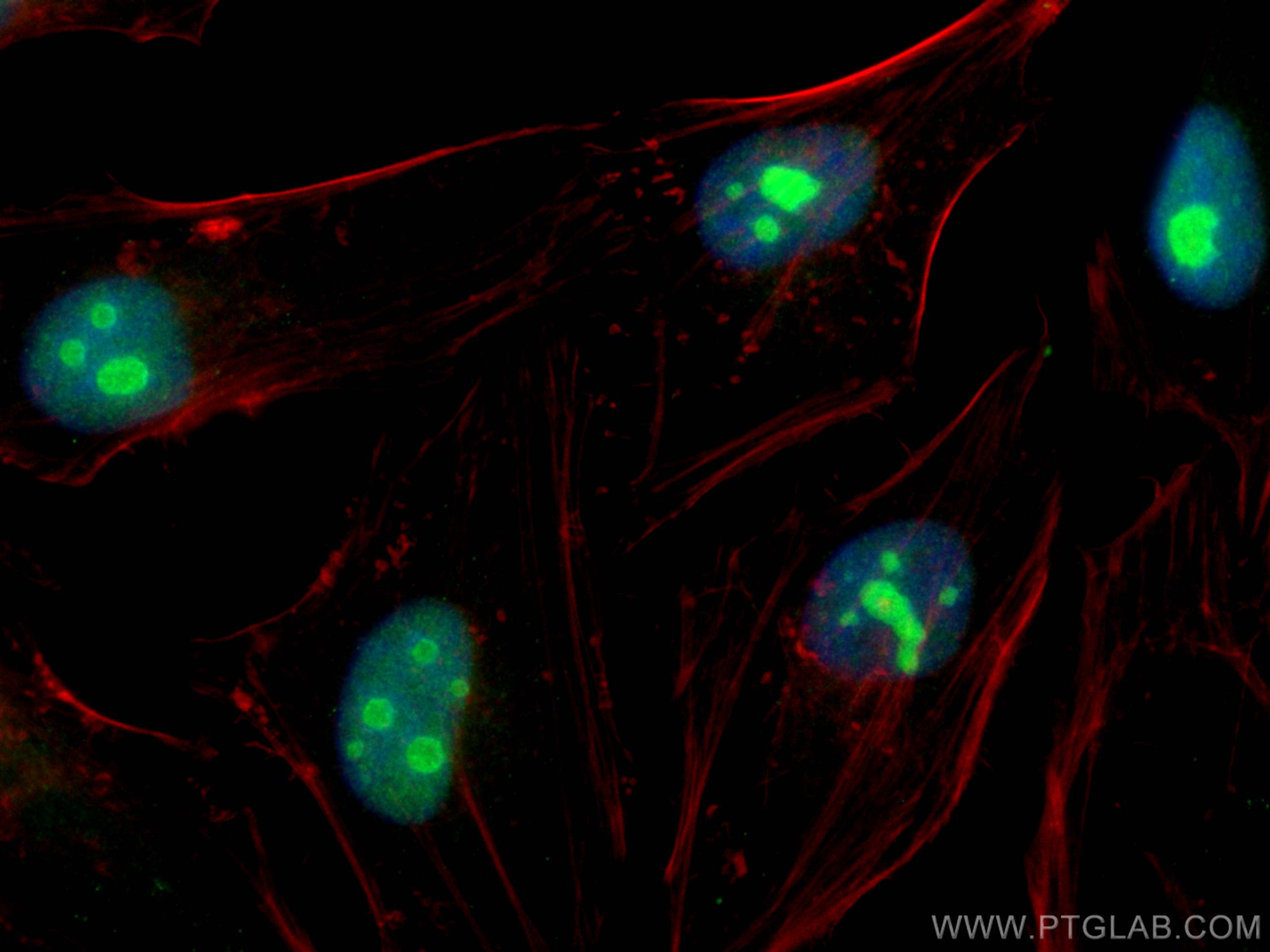Tested Applications
| Positive WB detected in | HEK-293T cells, HeLa cells, Jurkat cells, mouse testis tissue |
| Positive IF/ICC detected in | A431 cells, HeLa cells |
Recommended dilution
| Application | Dilution |
|---|---|
| Western Blot (WB) | WB : 1:1000-1:8000 |
| Immunofluorescence (IF)/ICC | IF/ICC : 1:50-1:500 |
| It is recommended that this reagent should be titrated in each testing system to obtain optimal results. | |
| Sample-dependent, Check data in validation data gallery. | |
Product Information
31150-1-AP targets TBL3 in WB, IF/ICC, ELISA applications and shows reactivity with Human, mouse samples.
| Tested Reactivity | Human, mouse |
| Host / Isotype | Rabbit / IgG |
| Class | Polyclonal |
| Type | Antibody |
| Immunogen | TBL3 fusion protein Ag34900 Predict reactive species |
| Full Name | transducin (beta)-like 3 |
| Calculated Molecular Weight | 89 kDa |
| Observed Molecular Weight | 89 kDa |
| GenBank Accession Number | BC010231 |
| Gene Symbol | TBL3 |
| Gene ID (NCBI) | 10607 |
| RRID | AB_3669872 |
| Conjugate | Unconjugated |
| Form | Liquid |
| Purification Method | Antigen affinity Purification |
| UNIPROT ID | Q12788 |
| Storage Buffer | PBS with 0.02% sodium azide and 50% glycerol pH 7.3. |
| Storage Conditions | Store at -20°C. Stable for one year after shipment. Aliquoting is unnecessary for -20oC storage. 20ul sizes contain 0.1% BSA. |
Background Information
Transducin (beta)-like 3 (TBL3) is a protein of 808 amino acids with an apparent molecular weight of 89 kilodaltons.In mice, Tbl3 is a newly recognized nucleolar protein with regulatory roles in ribosome biogenesis (doi: 10.5315/wjh.v3.i3.93). In zebrafish, Tbl3 plays a tissue-specific role in regulating cell cycle rate during development(PMID: 22659140).
Protocols
| Product Specific Protocols | |
|---|---|
| WB protocol for TBL3 antibody 31150-1-AP | Download protocol |
| IF protocol for TBL3 antibody 31150-1-AP | Download protocol |
| Standard Protocols | |
|---|---|
| Click here to view our Standard Protocols |







